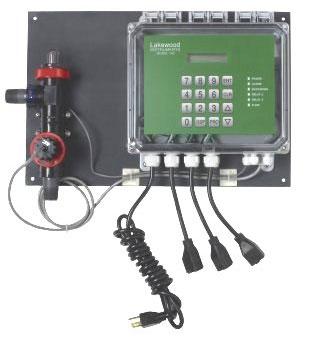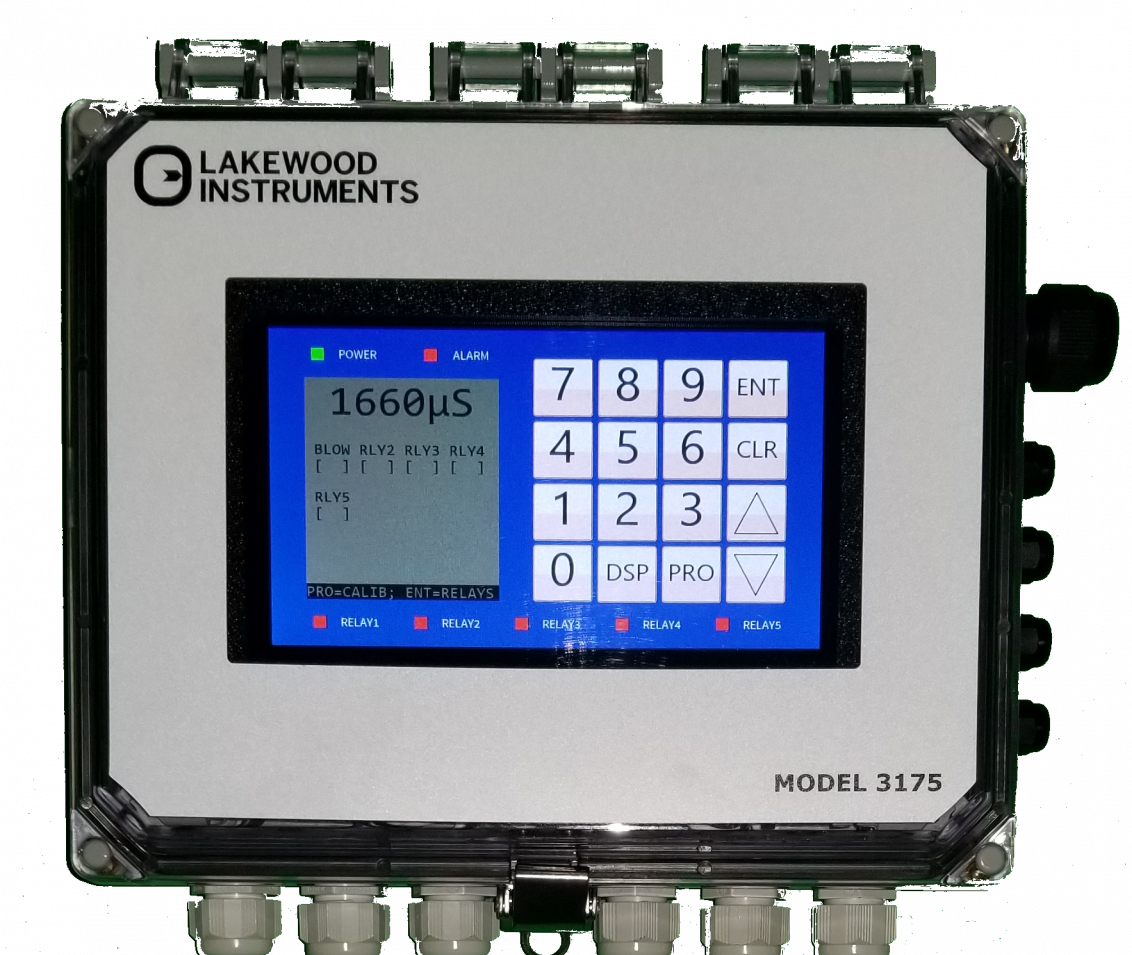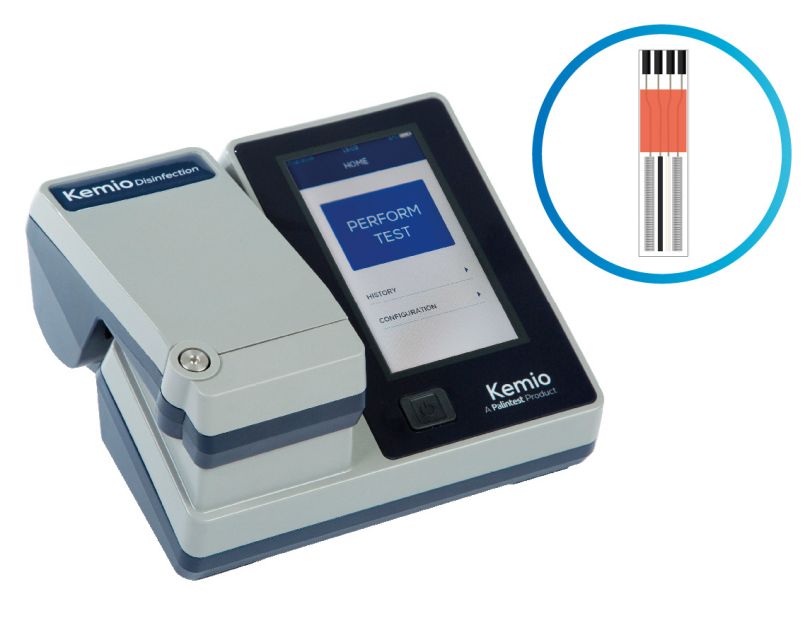Cooling Water Treatment 101 - Conductivity
October 01, 2015 0 Comments
Hundreds of surveys, we find that operational control of cooling water treatment programs is often neglected and that it is the single most common cause of water management program failure. The best possible combination of corrosion, scale, and deposition control chemicals, with effective biocides, is completely worthless if not consistently and correctly applied to the cooling water. It is a continual source of amazement that firms will spend tens of millions of dollars on their facilities, and then use the lowest cost (low bid!!) control equipment on their cooling systems, bearing in mind that with control equipment, as most other items, you get exactly what you pay for!
Cycles
Cooling water chemistry control begins with the cooling water cycles (C), or the number of times that the dissolved salts in the fresh makeup water (MU) are concentrated by evaporation (E) from the cooling system. This parameter is commonly obtained by measuring the conductivity of the cooling water (CW) and dividing it by the measured conductivity of the makeup water. Cycles can also be calculated using other parameters, such as chlorides and dissolved solids, which are common to both the makeup and cooling water and are not expected to be effected in any great degree by chemical additions, or precipitations. Another simple calculation of cycles, if the appropriate water meters are in place, is to simply divide the amount of makeup by the amount of blowdown. Control of cycles is critical in systems using hard makeup water as no chemical treatment program can prevent scale when excessive levels of dissolved salts are present in the cooling water. Cycles are controlled by discharging, or blowing down, concentrated water from the system and replacing it with fresh water. Referred to as blowdown (BD), this wasted water keeps the concentration of dissolved solids in the cooling system at levels where no precipitation will take place.
Why Cycle?
A common question is, "Why use chemical treatments to operate at additional cycles when often no scale will form when operating at lower cycles." The best answer is that operation at increased cycles substantially lowers both the makeup and blowdown requirements, cutting the cost of fresh water and sewage disposal. With corrosive waters, increasing the cycles so that the water is rendered less corrosive is an inexpensive means to improve control of corrosion. Another point is that operation at increased cycles permits use of effective corrosion inhibitors that may be too costly to employ at the higher blowdown rates resultant from low cycle operation. Often the quality of the makeup water is so bad that a scale inhibitor must be employed just to use the water. In such cases cycling reduces the cost of the scale inhibitor use to an economic level. We find that operation of cooling towers between 3 to 6 cycles is the most economical range. Environmental requirements, insufficient amounts of fresh makeup water, and the USGBC LEED program are additional forces driving cooling tower operation to higher cycles. For example, sewer tap fees for a new plant of $100,000 were reduced to $10,000 simply by increasing cooling tower cycles from 3 to 6, cutting the blowdown amount in half. Environmental agencies are also taking a much closer look at facility water use. One recent NPDES permit issued in Arizona contained a condition that the permittee operate at 17 cycles in order to reduce its fresh water usage and blowdown. The USGBC LEED program awards certification points for reduction of water use, elimination of hazardous chemical usage, reduction in wastewater discharged, and use of innovative technology. All of these factors must now be considered in design of a cooling water management program where the user desires LEED certification.
The Economics of Cycles
'Maximum economic cycles' is the cycles value where the total operating cost for the entire program is lowest. This value is determined based on the cost of water, sewerage, blowdown, and chemical treatment for each specific application. One unique set of operational parameters consisting of cycles, inhibitor chemistry, inhibitor dosage, makeup, and blowdown can be found for each makeup water/facility combination which gives the lowest total operating cost. Generally maximum economic cycles are controlled by the calcium carbonate saturation index (SI) of the cycled makeup water. Using an analysis of the makeup water, it is modeled over a typical range of 2 to 10 cycles and the resultant SI values determined. The cycles values matching to SI values of 1.0, 2.0, and 3.0 are utilized as breakpoints in determination of the cost of the chemistry required to prevent scale at those cycles. The costs for makeup water, blowdown disposal, and the inhibitor chemistry required are then calculated at these determined values and compared to determine the maximum economic cycles.
Saturation Index by Hand Calculator
1). P1 = log 10 (calcium * 2.5 * total alkalinity)
2). P2 = (maximum system water temp, F * 0.00912) + P1
3). P3 = ((log 10 (conductivity * 0.8) * 0.1) + 12.27
4). pH saturation = P3 – P2
5). SI = pH of cycled water - pH saturation
The pH of the cycled water can also be estimated by first converting the pH to a "real" number by using the inverse log function, 10 pH. Then multiply this "real" number by the number of cycles desired, converting back to a pH value by taking the log of this number. Most cooling systems are operated with SI values between 0.5 and 3.5. The calculation of maximum economic cycles is not always possible due to insufficient information. In the majority of cases, we have found that using a chemistry which will permit 3 to 6 cycles operation will result in a total operating program cost close to the absolute minimum cost.
Methods for Controlling Cycles
There are two good methods for control of cooling system cycles: makeup proportional blowdown and conductivity based blowdown.
Makeup proportional blowdown control is really quite simple, the amount of makeup added to the cooling tower is metered and a signal is generated by the water meter which activates a timer. This timer then controls operation of a flow controlled blowdown valve to discharge a proportional amount of blowdown from the cooling system. For example, if 1000 gallons of makeup was added to a system operating at 5 cycles, the timer would operate a 10 gpm flow controlled blowdown valve a total of 20 minutes to discharge the 200 gallons required to maintain 5 cycles in the cooling tower.
Conductivity based blowdown control is based on measuring the conductivity (which is proportional to the level of dissolved salts) of the cooling water. When the conductivity reaches a predetermined control level, an automatic valve is activated and high dissolved salt content water is drained from the cooling water system. Replacing this blowdown with new makeup water lowers the conductivity of the cooling water, deactivating the automatic valve. Comparing the two methods, we find that proportional blowdown control is less costly to install and maintain, while conductivity blowdown control can compensate for leaks (smaller ones!) in the cooling system and somewhat for changing makeup water quality. Conductivity based blowdown control does have one significant problem that is often not considered when using a hard makeup water. When scale forms in a cooling system, calcium and alkalinity are both removed from the cooling water as calcium carbonate, lowering the conductivity of the cooling water. The conductivity blowdown controller sees this as a lowered cycles value and thus does not blowdown to maintain a “true” cycles value, resulting in over cycling and generation of additional scale, which then further lowers the conductivity, increasing true cycles even more. This is a "Catch 22" type situation where some initial scale formation results in a cycle effect leading to more and more scale formation in the cooling system. This problem is more common than realized and must be considered when deciding upon which cycle control method to use. Cycled cooling water often contains various items; dead bugs, leaves, and pine cones; which when lodged in blowdown valves disable the valve, either open or closed, resulting in loss of cycle control. Good engineering practice is to install a Y, or small basket, strainer upstream of the blowdown valve to prevent this problem. Also, you could use a motorized ball valve, like the Yamatho YS20S (#yamavalve), which has a larger orifice though which will not be clogged by the suspended solids, eliminating any disruption of the conductivity control loop.
Also in Blog

Advanced Cooling Tower Management: Enhancing Efficiency with Lakewood Model 140
February 28, 2024 0 Comments

Optimizing Cooling Tower Performance: Understanding Efficiency, Maintenance, and Water Quality Management
February 28, 2024 0 Comments

Revolutionizing Water Analysis: Everything You Need to Know About the Kemio KEM10DIS
April 19, 2023 0 Comments

